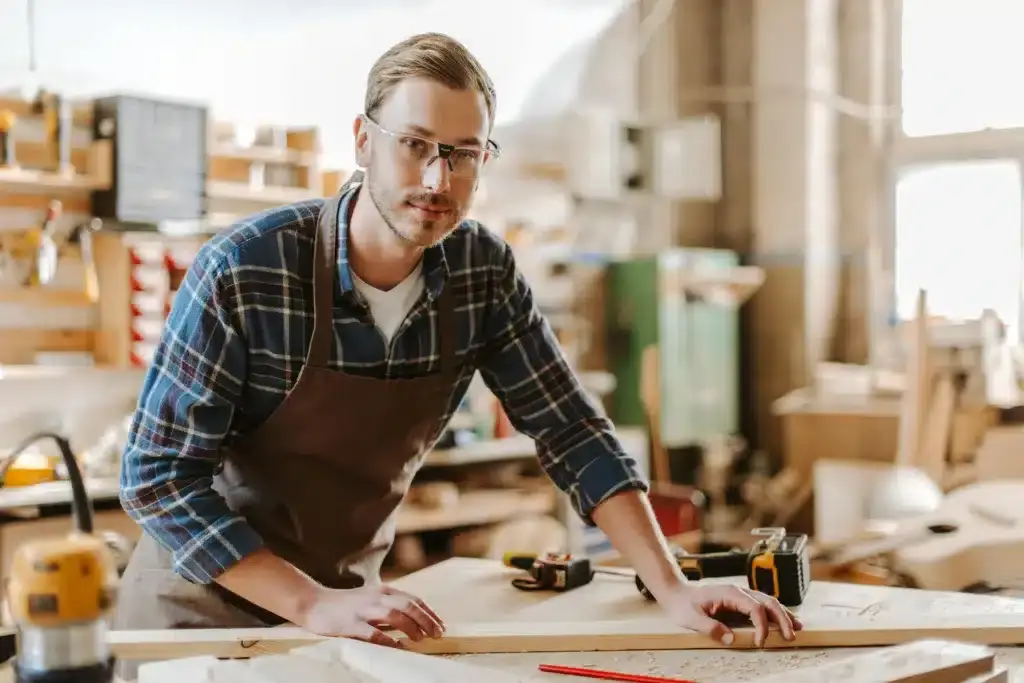Glasses can serve a variety of purposes. Of course, they’re most often used to correct refractive errors and give you the clearest possible vision. You should also have a pair of glasses designed to block UV rays — i.e., sunglasses. Even if you have perfect eyesight, you might purchase glasses purely as a fashion accessory. And from time to time, you might enjoy the effects of a cheap pair of 3D glasses at the movie theater. But what about glasses designed to protect your eyes from debris, projectiles, chemicals, and more? Known as safety glasses, this form of eyewear is absolutely essential for people whose jobs or hobbies place their ocular health at risk. Scroll down to learn more about why safety glasses are so important in certain situations and the standards you need to familiarize yourself with if you’re in the market for safety glasses.
The Importance of Safety Glasses
According to the National Institute for Occupational Safety and Health (NIOSH), every day about 2,000 U.S. workers sustain job-related eye injuries requiring medical treatment. The following are examples of eye hazards:
- Projectiles (dust, concrete, metal, wood, tiny particles, etc.)
- Chemicals (fumes and splashes)
- Radiation (visible light, UV radiation, heat or infrared radiation, lasers)
- Bloodborne pathogens from blood or bodily fluids
Certain occupations have a much higher risk of eye injuries. For example, if you work in the following fields, you should definitely explore eye protection:
- Auto Repair
- Carpentry
- Construction
- Electrical Work
- Maintenance
- Manufacturing
- Mining
- Plumbing
- Welding
Certain hobbies (home renovation, yard work, woodworking, glass blowing, etc.) and certain sports (hockey, lacrosse, skiing, snowboarding, paintball, etc.) also present a risk to eye health. Nearly half of eye injuries occur at home, so don’t underestimate the risk presented by seemingly simple activities like cleaning with bleach, using hand tools, or mowing the lawn.
Fortunately, eye doctors and safety experts agree that the right eye protection can greatly reduce the likelihood of damaging incidents at home and in the workplace.
Finding the Right Safety Glasses for You
It’s important to look for glasses that protect against the hazards presented by your specific career or hobby. For example, if you work in an environment with airborne particles, your eyewear should include side shields. If you’re working with chemicals, you should wear goggles to protect against fumes. If you’re welding, you may need to wear a full face shield and helmet. It’s important to learn the safety requirements for your specific occupation or hobby.
To find the right work safety glasses, look to the Occupational Safety and Health Administration (OSHA), which has established what eye protection is needed for different types of jobs. Whoever oversees OSHA compliance at your workplace (commonly the human resources department) should be able to help you determine which standards apply to your specific job.
ANSI Standards
When choosing protective eyewear, look for “ANSI Z87.1” on the frame. This refers to the American National Standards Institute’s (ANSI) Z87.1 standard, which is the current standard for safety glasses. ANSI also uses certain letters and markings to convey more information about eyewear’s safety features. For example, you may spot these markings:
- Z87+ is a high-velocity impact rating.
- Z87.2 indicates the lenses are prescription safety glasses.
- D3 refers to splash and droplet protection.
- U followed by a number conveys the level of UV protection.
- W followed by a number conveys the level of welding protection.
- R followed by a number conveys the level of infrared protection.
- L followed by a number conveys the amount of visible light filtered by the eyewear.
- S refers to a special lens tint.
- H refers to a small frame size, designed for smaller heads.
- X refers to fog-resistant eyewear.
When developing their standards, ANSI takes into account a variety of potential eye hazards, including blunt impact, radiation, liquid splashes and spills, dust, and small particles. They also routinely update their standards to reflect new technology, new hazards, and other health and safety information.
_____
Once you have appropriate safety glasses, make wearing them a nonnegotiable part of your routine. Remember that one unprotected incident has the potential to create permanent eye damage.
At Heffington’s, we manufacture high-quality safety glasses that meet ANSI standards and OSHA requirements. We strive to surpass expectations when it comes to work glasses, providing exceptional products that offer both safety and comfort. Whether you’re looking for safety glasses for work, sports, or home construction projects, we can help.
Heffington’s is here to help with all your optical needs. Whether it’s an annual eye exam, a contact lens fitting, or the perfect pair of safety glasses, we’re your experienced, knowledgeable, hometown team. To learn more about our products and services, please get in touch with us online, send an e-mail to asktheexperts@heffingtons.com, or give us a call at 417-869-3937 (Optiland location) or 417-882-3937 (House of Vision location). We look forward to hearing from you!

